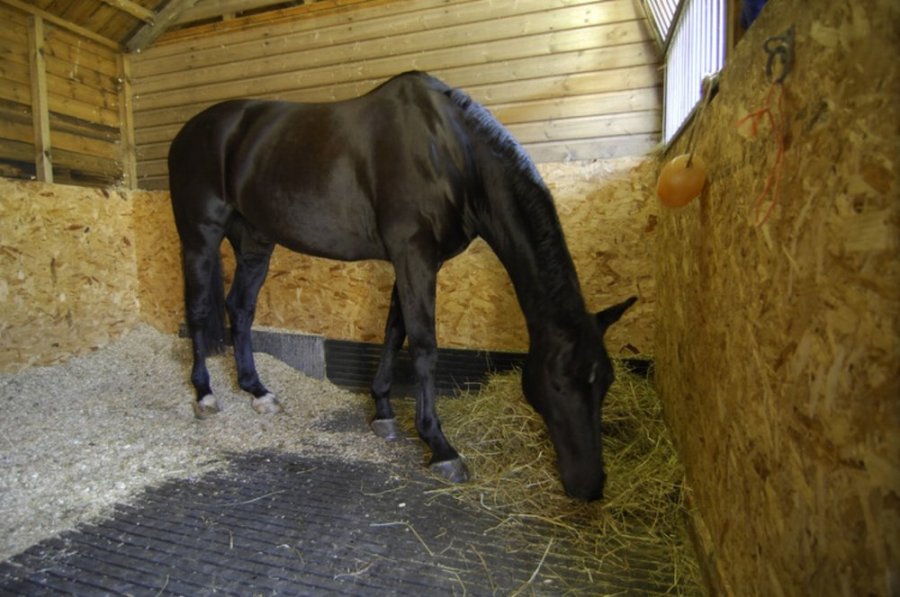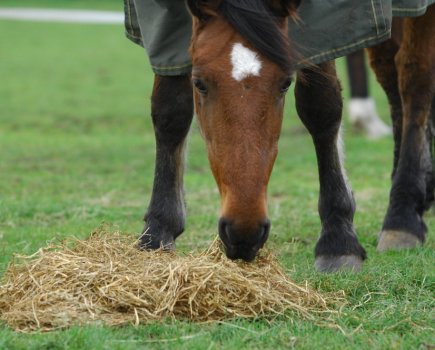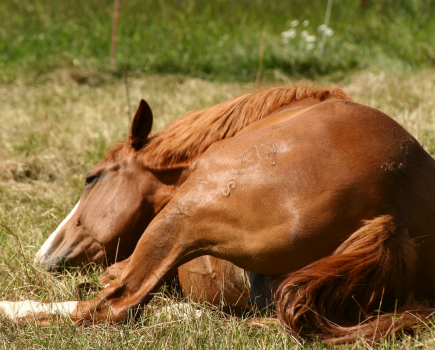Equine asthma is the most common cause of chronic coughing, a potentially serious horse health issue, in equines who live in temperate climates, and one I see often in my work as a vet. The UK is one country classed as a temperate climate, because it gets cool, wet winters and warm, wet summers, and rarely features extremes of heat or cold.
While veterinary attention is certainly required to help horses in both the acute and chronic stages of equine asthma, it is critical for owners to be aware of how much of a role the horse’s environment plays in this disease. In fact, without excellent owner compliance and understanding of environmental management, the benefit we are able to provide as vets with medication will be limited.
When I was teaching a module about the management of common emergencies in equine practice as part of XLEquine Vets’ Equine Graduate Development programme, it covered equine asthma. Equine asthma can mean acute respiratory distress if not managed correctly, and so it is an emergency.
What is equine asthma?
Equine asthma is triggered by environmental allergens found in inhaled organic dusts such as spores, moulds and ammonia. These allergens stimulate an already hyper-responsive airway to constrict, form excessive quantities of mucus and inflame the airway lining, reducing airflow to the lungs and increasing the difficulty of breathing.
Most horses owners are familiar with the terms chronic obstructive pulmonary disease (COPD) and recurrent airway obstruction (RAO). However, relatively few are aware of equine asthma, and if they are they may not be sure how it differs. Equine asthma has superseded the previous acronyms because its underlying mechanisms are very similar to the human asthma equivalent — far more so than the human equivalent of COPD.
Summer cases of horses with equine asthma are more likely to exhibit difficulty breathing rather than a cough, particularly in an acute flare up of the condition. In winter, particularly in the face of cold temperature snaps, respiratory distress in the form of sudden onset coughing and rapid breathing with increased abdominal effort, seen as a heave line, is not uncommon.
How to manage equine asthma
In cases of equine asthma, cleanliness is next to godliness. If you’re involved with managing a horse or pony with equine asthma, here are a few tips for you to make sure you keep the risks of flare ups to a minimum:
1 Do some house work
Yep, we need to dust and clean the stable too. Have a look up and around your horse’s stable. If there are cobwebs, there’s dust. This is what your horse’s lungs are exposed to as well, which won’t help. Get the feather duster and vacuum cleaner out and set to with gusto! If you wouldn’t like your bedroom to look like this, then it’s not clean enough for your horse.
2 Consider your choice of bedding
Use horse bedding that has minimal dust and keep the bed as clean as possible — no deep littering. There are so many options for bedding materials available now, but critically try and make sure your horse gets as as much turnout as possible, because they are better off outside breathing in the clean air.
3 Consider what you’re feeding
In a similar vein to number two, consider the feed stuff you are giving your horse. Dust is not good for horses in general, and especially those with equine asthma, and nor are fungal spores or moulds. My preference is to steam hay or consider haylage in leaner horses, or you could mix hay with straw.
4 Always feed from the floor
It’s better to feed forage and bucket feeds from the floor. This is the way horses are designed to eat, with their head down to allow respiratory secretions to drain.
5 Look around you
Finally, be aware that your horse’s neighbours’ environment also matters to susceptible horses. Allergens become airborne, so although your horse’s direct environment is the most important, if they are kept in a barn, what else goes on in the barn matters too. Keep at risk horses near the door, in a well ventilated (front and back) stable, well away from muck heaps or the hay/straw stores.
6 Maximise ventilation
You might think you’re doing the best for your horse by closing the window in their stable (or even the top door) because it’s raining and started to get a bit windy, but actually you’re not. Ventilation is crucial so that air can circulate and keep the oxygen they’re breathing in clean. Keep all vents and windows open at all times. Horses really don’t mind getting wet!
7 Limit dust exposure
When you’re mucking out or sweeping the yard, make sure your horse is well away from the area. Avoid mucking out around them or sweeping the yard while they’re in the stable as you will be causing dust particles to enter their breathing space. Tie them up somewhere outside or wait until they’re in the field. The bonus of doing the latter is that the dust has a chance to settle before the horse is brought back in.
For specific advice about managing equine asthma, my best advice is to ring your own vet, as they have the added advantage of knowing your horse’s history and can discuss them according to any special requirements and the environment in which they live.
Find out more about XLVets Equine









